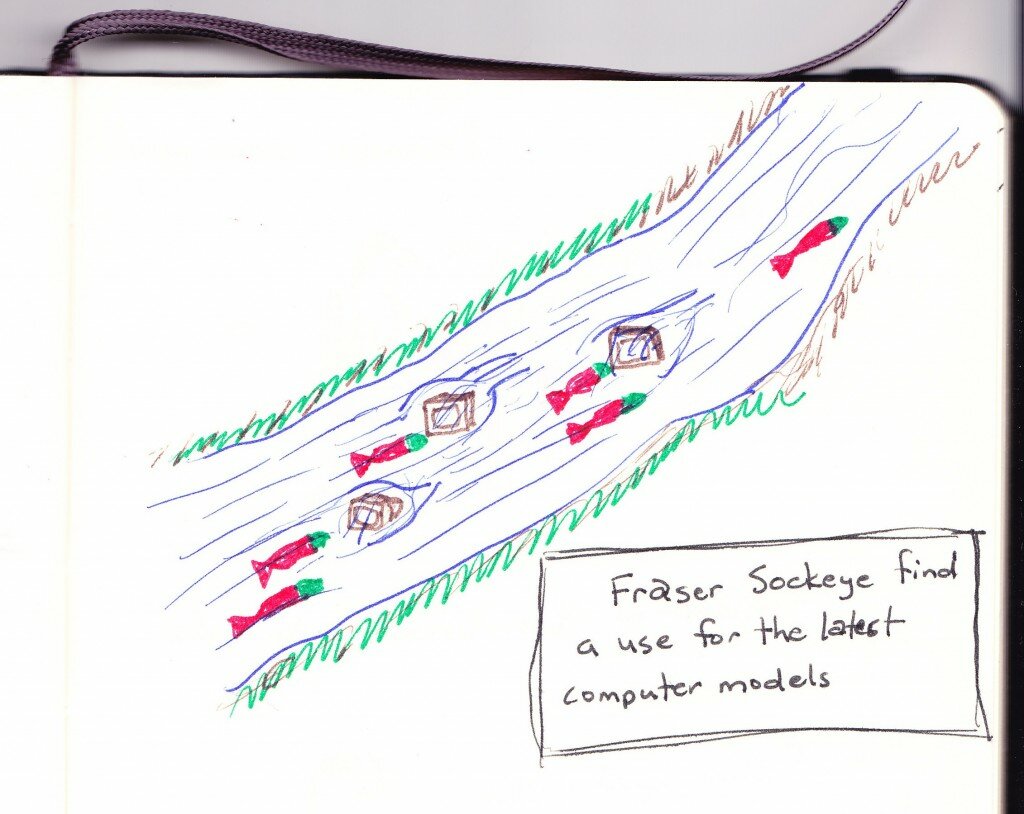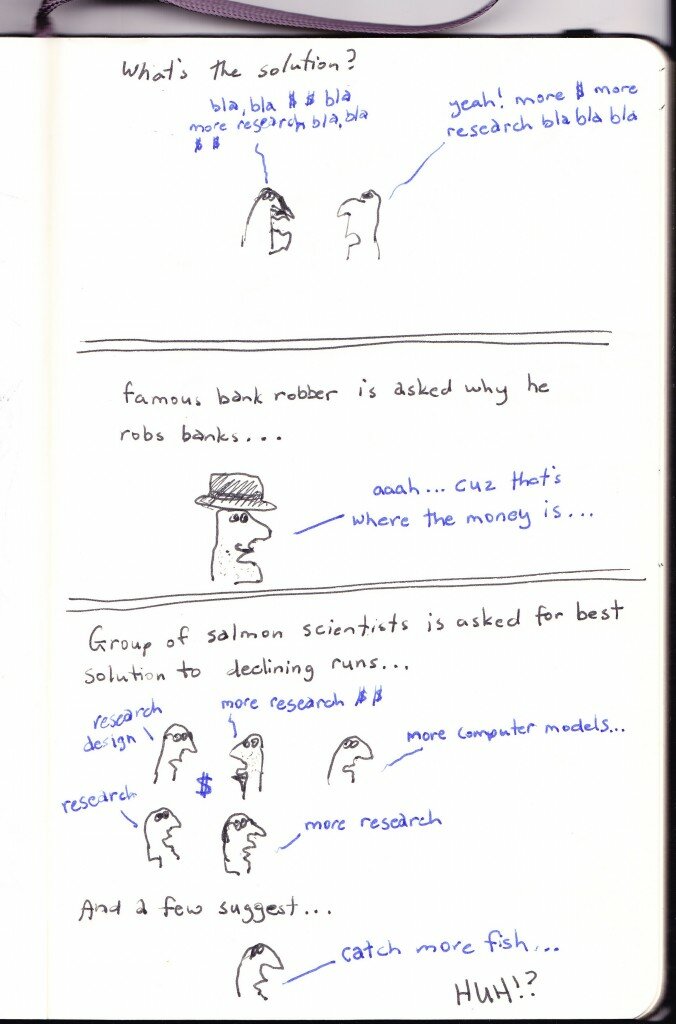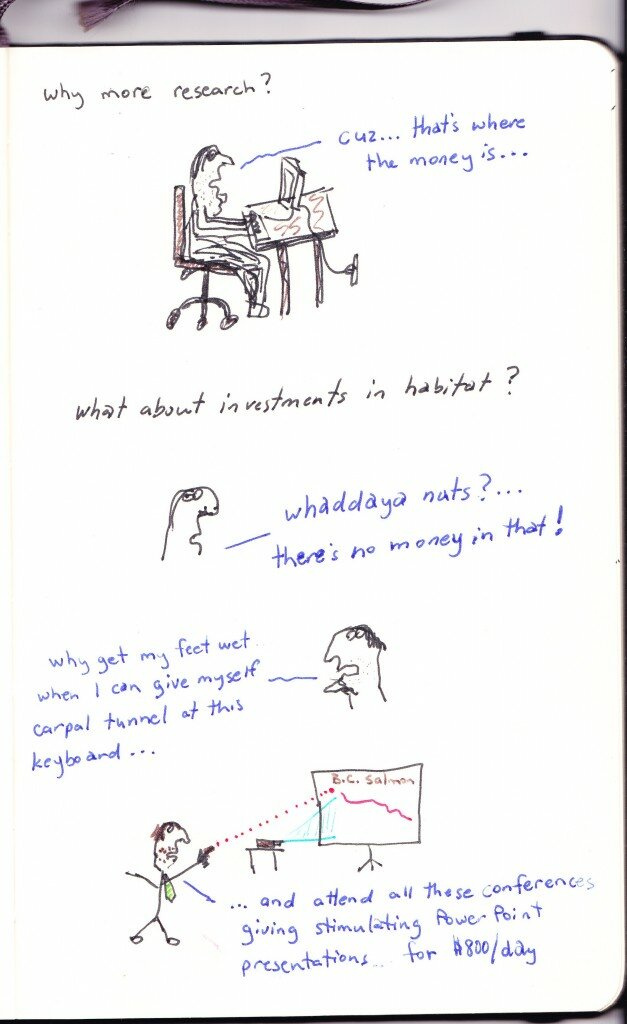This coming week I’ll be making a presentation to the Cohen Commission as they make their way through Prince George, BC.
The Commission has requested folks make 10-minute limited presentations on the following suggested topics:
What is your vision for the sustainability of Fraser sockeye?
How can citizens participate in the recovery of Fraser sockeye?
What is required to secure the future of Fraser sockeye?
What are the major habitat issues for Fraser sockeye and how can these be mitigated?
How can Fraser sockeye be effectively harvested?
It’s tough, in that if one was to speak to each of those points… that’s less than 2 minutes an issue. Yet, I can respect that there is only so much time to do this process. Unfortunately, the quasi-legal, lawyer-heavy process won out — along with a science-heavy research agenda. All bundled together in a super packed timeline.
Tough choices.
_ _ _ _
I’ve been thinking through the components to include in a presentation, and may utilize blog posts over coming days to make that clearer.
This morning, these pieces came to mind:
.
Now I recognize this probably doesn’t get me on any scientists Christmas card list… however, I haven’t heard much else coming out on the solutions list from the “experts”. There’s quite a bit of… “there’s a lot of factors…” and “we just can’t pinpoint one issue” and “it’s complicated”… but there’s not a whole lot of “here’s an idea” or “here’s something to try” or, maybe the simplest of all, “let’s just work on the things that we can actually work on..”
For example, freshwater habitat issues.
.
This week I’ve been reading a great book on fighting poverty around the world by Paul Polak (entrepreneur, inventor and self-identified “troublemaker” — . Polak is not a fan of the great “aid” approach to world poverty. He says stick with the simple solution… work with farmers to increase their income.
What a concept.
He operates by what he calls the “don’t bother” trilogy:
1. If you haven’t had good conversations, with your eyes open, with at least twenty-five poor people before you start designing, don’t bother.
2. If what you design won’t at least pay for itself in the first year, don’t bother.
3. If you don’t think you can sell at least a million units at an un-subsidized price to poor customers after the design process is completed, don’t bother.
Good advice. The “don’t bother trilogy”.
Here’s one, off the top of my head, for Fraser sockeye:
- If one hasn’t had good conversations, with one’s eyes and ears open, with at least twenty-five people in at least twenty-five communities before starting to design “solutions”, don’t bother.
- If what you design won’t at least pay for itself in the first year, including computer simulation models subsidized by government agencies (and the Wild Salmon Policy), don’t bother.
- If you can’t manage a fish population subject to fisheries, un-subsidized, don’t bother.
Have one of your own?



